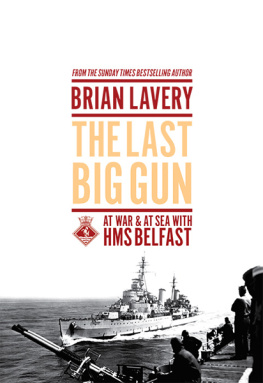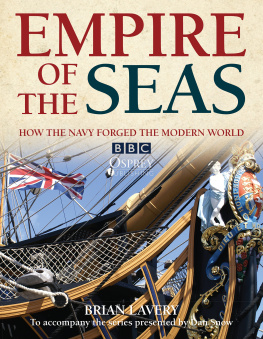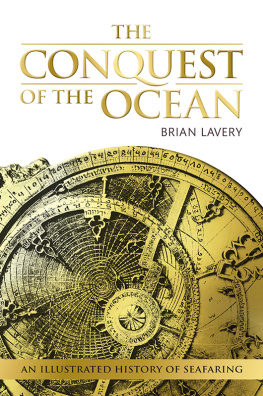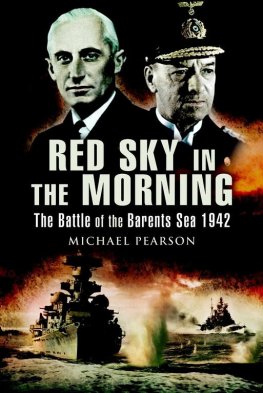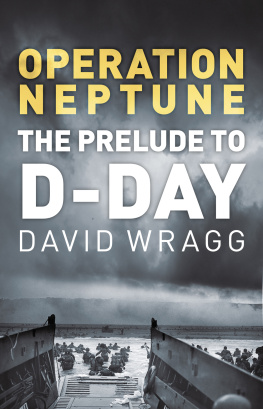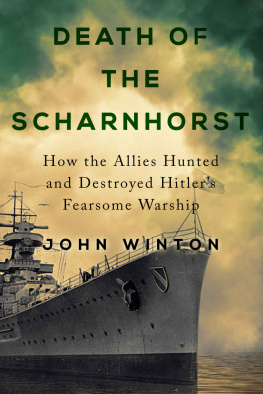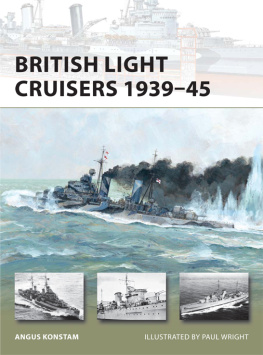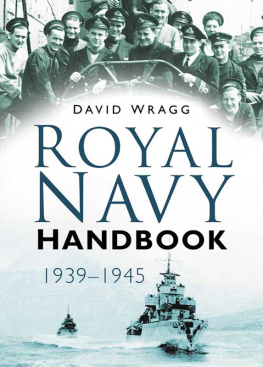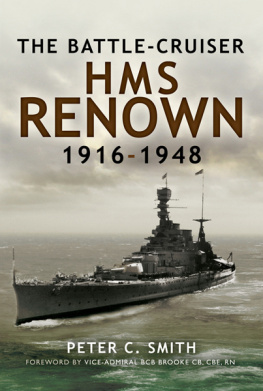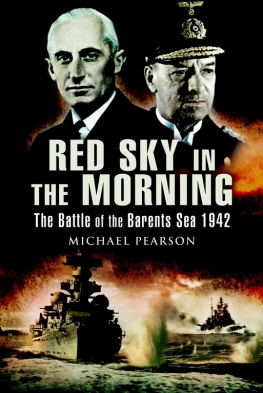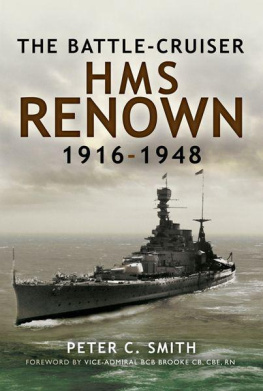BY THE SAME AUTHOR
(SELECTED)
THE SHIP OF THE LINE (2 VOLS)
THE ARMING AND FITTING OF ENGLISH SHIPS OF WAR, 16001815
NELSONS NAVY
THE 74-GUN SHIP BELLONA
BUILDING THE WOODEN WALLS
NELSON AND THE NILE
SHIP
HORATIO LORD NELSON
JACK AUBREY COMMANDS
HOSTILITIES ONLY
THE ISLAND NATION
RIVER CLASS FRIGATES AND THE BATTLE OF THE ATLANTIC
CHURCHILLS NAVY
SHIELD OF EMPIRE
IN WHICH THEY SERVED
CHURCHILL GOES TO WAR
THE FRIGATE SURPRISE
ROYAL TARS
ABLE SEAMEN
ALL HANDS
ROYAL NAVY OFFICERS POCKET-BOOK (ED.)
ASSAULT LANDING CRAFT
WE SHALL FIGHT ON THE BEACHES
EMPIRE OF THE SEAS
SS GREAT BRITAIN
THE CONQUEST OF THE OCEAN
NELSONS VICTORY
This edition published in Great Britain in 2015 by
The Pool of London Press
A Division of Casemate Publishers
10 Hythe Bridge Street
Oxford OX1 2EW, UK
and
1950 Lawrence Road, Havertown, PA 19083 USA
www.pooloflondon.com
Brian Lavery 2015
All rights reserved. No part of this book may be reproduced or
transmitted in any form or by any means, electronic or mechanical
including photocopying, recording or by any information storage and
retrieval system, without permission from the publisher in writing.
A CIP record for this book is available from the British Library
ISBN (hardback) 978-1-910860-01-4
ISBN (ebook) 978-1-910860-07-6
ISBN (kindle) 978-1-910860-08-3
ISBN (pdf) 978-1-910860-09-0
Editing, cartography and design by David Gibbons
General arrangement drawings (pages 67) courtesy Ross Watton
Printed in the Czech Republic by FINIDR s.r.o.

The Pool of London Press is a publisher inspired by the rich history
and resonance of the stretch of the River Thames from London Bridge
downriver to Greenwich. The Press is dedicated to the specialist fields of
naval, maritime, military as well as exploration and cartographic history
in its many forms. The Press produces beautifully designed, commercial,
non-fiction volumes and digitial products of outstanding quality for a
dedicated readership featuring strong narratives, magnificent
illustrations and the finest photography.
To find out more please visit www.pooloflondon.com and to receive
regular email updates on forthcoming Pool of London titles, email
with Pool of London Updates in the
subject field.
For a complete list of Pool of London Press and Casemate titles,
please contact:
CASEMATE PUBLISHERS (UK)
Telephone (01865) 241249
Fax (01865) 794449
Email:
www.casematepublishers.co.uk
CASEMATE PUBLISHERS (US)
Telephone (610) 853-9131
Fax (610) 853-9146
Email:
www.casematepublishing.com
CONTENTS
HMS Belfast
General Arrangements 1942, after extended refit

HMS Belfast
General Arrangements 1962, after refit
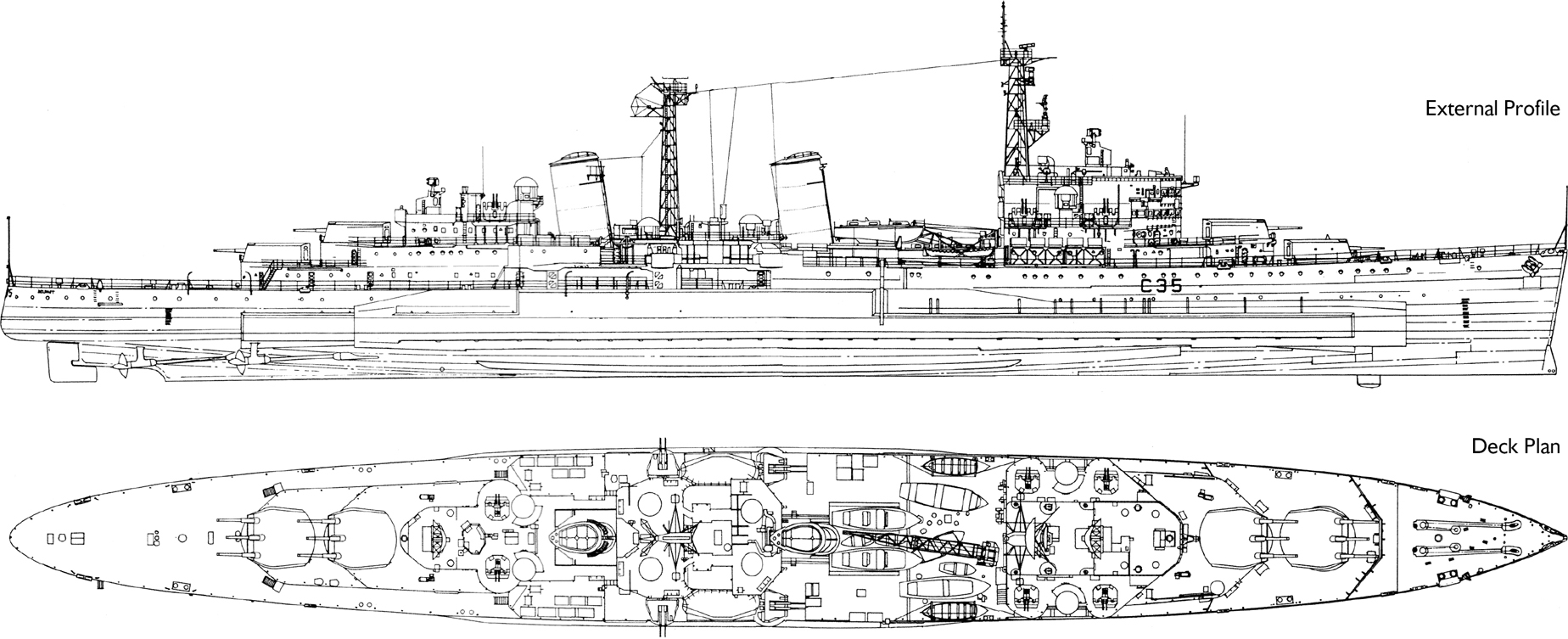
PREFACE
HMS BELFAST HAS BEEN MOORED IN THE VERY CENTRE of the British capital for more than forty years now. She has perhaps the most prominent site of any preserved ship in the world, moored in the Pool of London, which was associated more with merchant than naval shipping except that medieval warships belonging to the King were described as being of the Tower, that is the Tower of London, and of course the main job of the navy was to protect merchant shipping. She is by far the largest and most important representative of the countrys oldest fighting service during perhaps its most dramatic and world-changing conflict. Despite this, when John Lee, now of Pool of London Press, suggested that I might consider some kind of book on the ship, I was surprised to find that there is no full narrative history of her. This volume hopes to fill that gap.
One of the great advantages of writing about the Belfast is the great range of material which as available. It is often vivid and informative, while other items are highly detailed but equally revealing. Unlike destroyers and smaller vessels, the logs of cruisers were preserved in the National Archives. They are not always easy to understand out of context, but as well as navigational data they provide information on matters such as leave and punishments; and they are invaluable in checking exactly what the ship was doing at any particular moment. There are numerous reports by captains and admirals in the same archive, which are far more revealing about the nature of the voyage and the commanders instructions and intentions.
These items would be preserved for any ship of the period of cruiser size and above, but what makes the Belfast unique, apart from the existence of the ship herself, is the wide range of personal papers and oral history that is available. These range from senior officers such as Captain Dick, through more junior officers including George Thring and Brooke Smith, vivid midshipmens journals by the likes of J. A. Syms and R. L. Garnons-Williams, petty officers including William Read, to junior seamen such as Richard Wilson and K. J. Melvin, and even Boy William Crawford. Between them they describe every level and department of the ship. It is a feature of naval history that quite ordinary men and boys might witness the great events of war, though as one of the Belfasts men put it, each was only working to twiddle his particular knob and hope for the best.
The accounts come in several kinds manuscript autobiographies, oral history, papers collected at the time and letters to friends and family. The majority are in the Imperial War Museum, but others are to be found in the National Maritime Museum and Royal Naval Museum. The stock of personal papers is less rich after about 1947, but that is compensated for by the commission books for two of the voyages and the captains order book and wardroom mess rules, which tell us much of the mores and practices of the age.
On a personal note, I see this book as a part of a study of many different types from the Second World War. I have already written on the River Class frigates and Assault Landing Craft, which were very different in building and role from each other and from the Belfast. As such, the cruiser represents the big ship navy of battleships and cruisers. In each case I have tried to provide an allround view of the ship its design and building, equipment and its operation, the social background, training and daily lives of its officers and crew, and its role in naval operations. I hope by these examples, as well as in more general works such as Churchills Navy, In Which They Served and All Hands to help record and commem - orate the varied experiences of those who served in the navy in very different ways.
I would like to acknowledge the help by the staffs of the National Archives at Kew, the National Maritime Museum in Greenwich, the Imperial War Museum in Lambeth, the Royal Naval Museum in Portsmouth and the London Library. Thanks are due to John Lee for the original idea and to David Gibbons for editing the text and pointing out errors.
Brian Lavery
September 2015
PROLOGUE
MINED
HMS BELFAST WAS READY FOR WAR as she steamed away from her anchorage outside Rosyth Dockyard in the Firth of Forth at 9.17 in the morning of Tuesday 21 November 1939. She was a brand new ship, commissioned just fifteen weeks earlier, a month before war was declared on Germany. She had had a few teething troubles, and it had taken several weeks for the catapult that launched her aircraft to be fully fitted, but now she was ready for almost anything. She had a fully professional crew of regular sailors, for wartime volunteers and conscripts had not had time to complete their basic training. To Lieutenant Commander George Thring, We were undoubtedly a very happy ship. The organisation ran smoothly, and people smiled. Different branches such as seamen and stokers only mocked one another gently and did not clash seriously. The officers were not too pusser or officious. Captain George Scott was popular, a nice man according to one junior member of the crew. He had impressed them with his skill during an exercise when he played the part of a German raider and took the ship through the treacherous waters of the Pentland Firth in the dark. He took good care to inform the crew of events over the ships Tannoy or loudspeaker system and with weekly briefings.
Next page
